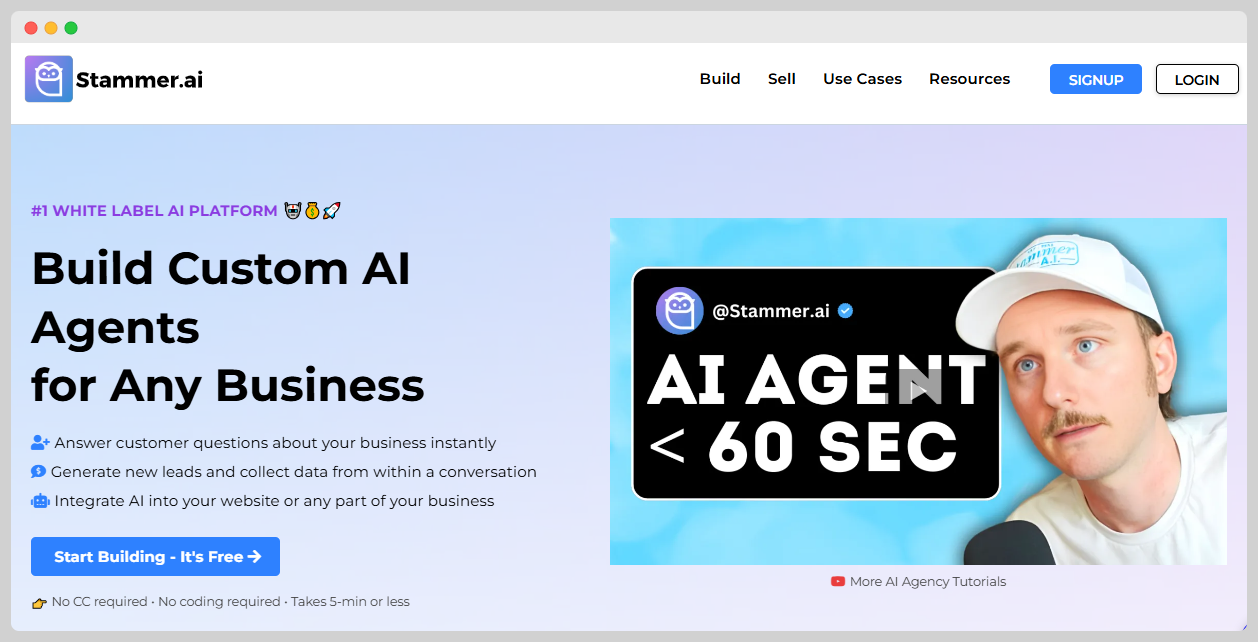How Timothy Bramlett Bootstrapped Stammer.ai to Hundreds of Paying Customers in Weeks
Who is Timothy Bramlett?
Timothy Bramlett, co-founder of Stammer.AI, began his career as a senior software engineer before transitioning into product management; originally from the United States, he later moved to California in 2023 to focus on entrepreneurial ventures alongside Ross Fledderjohn.
What problem does Stammer.AI solve?
Stammer.AI helps agencies offer customized AI solutions to their clients, solving the problem of needing specialized tech without the hassle of in-house development.

Disclaimer: The initial draft of this article was compiled by the Starter Story team based on publicly available interviews, podcasts, and other content from the founder. See the sources we used here.

Download the report and join our email newsletter packed with business ideas and money-making opportunities, backed by real-life case studies.

Download the report and join our email newsletter packed with business ideas and money-making opportunities, backed by real-life case studies.

Download the report and join our email newsletter packed with business ideas and money-making opportunities, backed by real-life case studies.

Download the report and join our email newsletter packed with business ideas and money-making opportunities, backed by real-life case studies.

Download the report and join our email newsletter packed with business ideas and money-making opportunities, backed by real-life case studies.

Download the report and join our email newsletter packed with business ideas and money-making opportunities, backed by real-life case studies.

Download the report and join our email newsletter packed with business ideas and money-making opportunities, backed by real-life case studies.

Download the report and join our email newsletter packed with business ideas and money-making opportunities, backed by real-life case studies.











